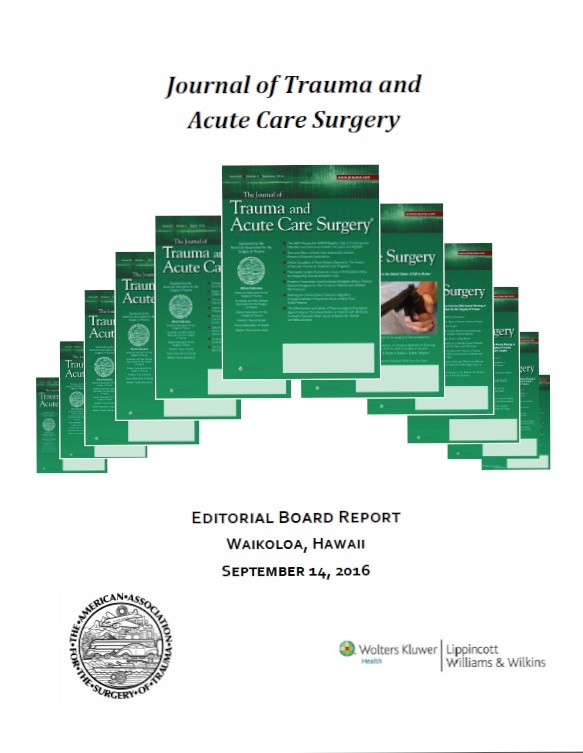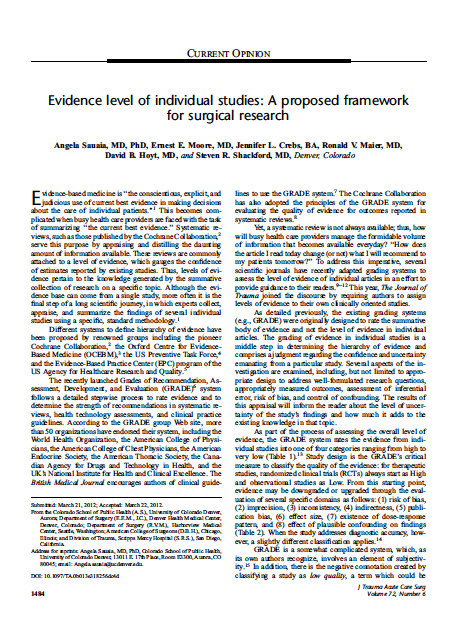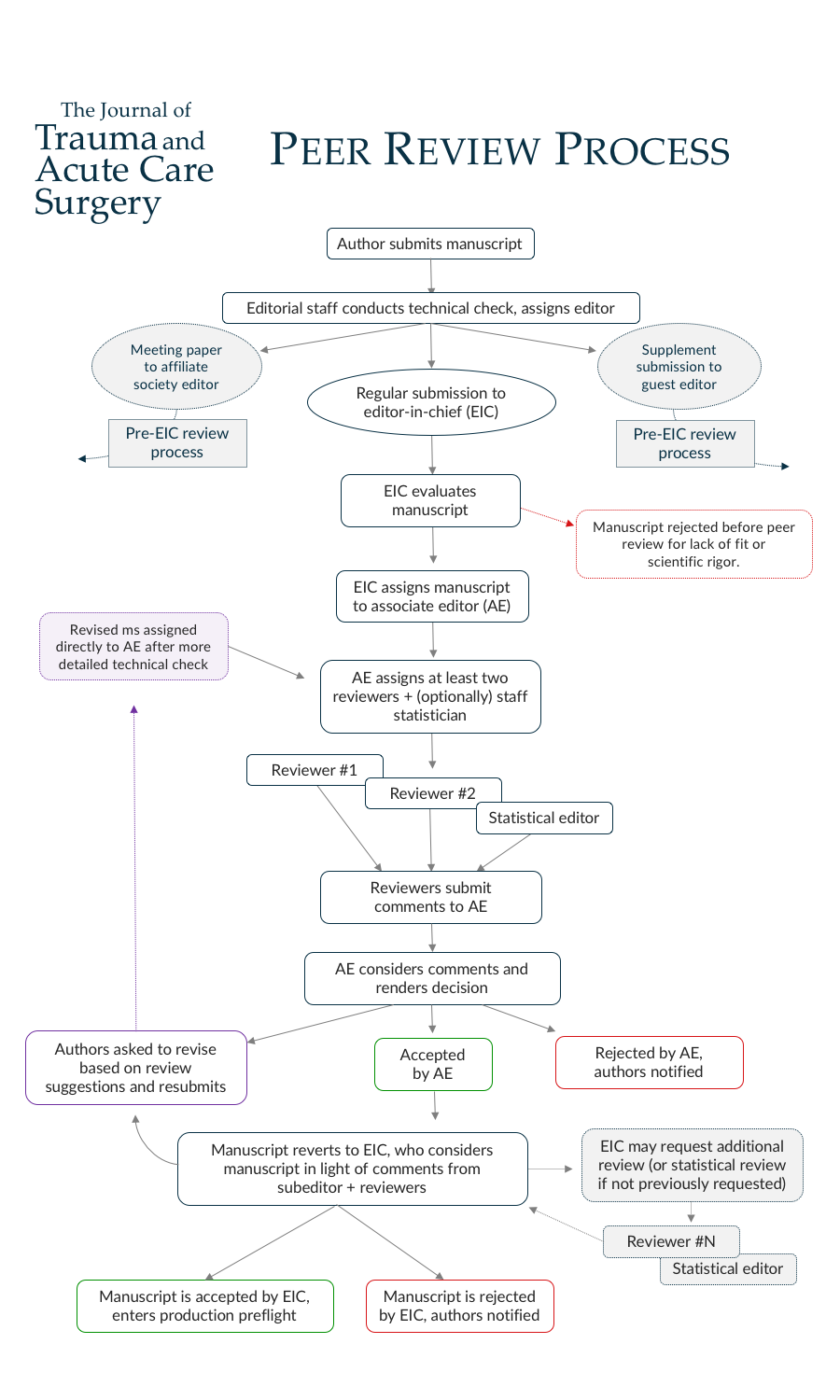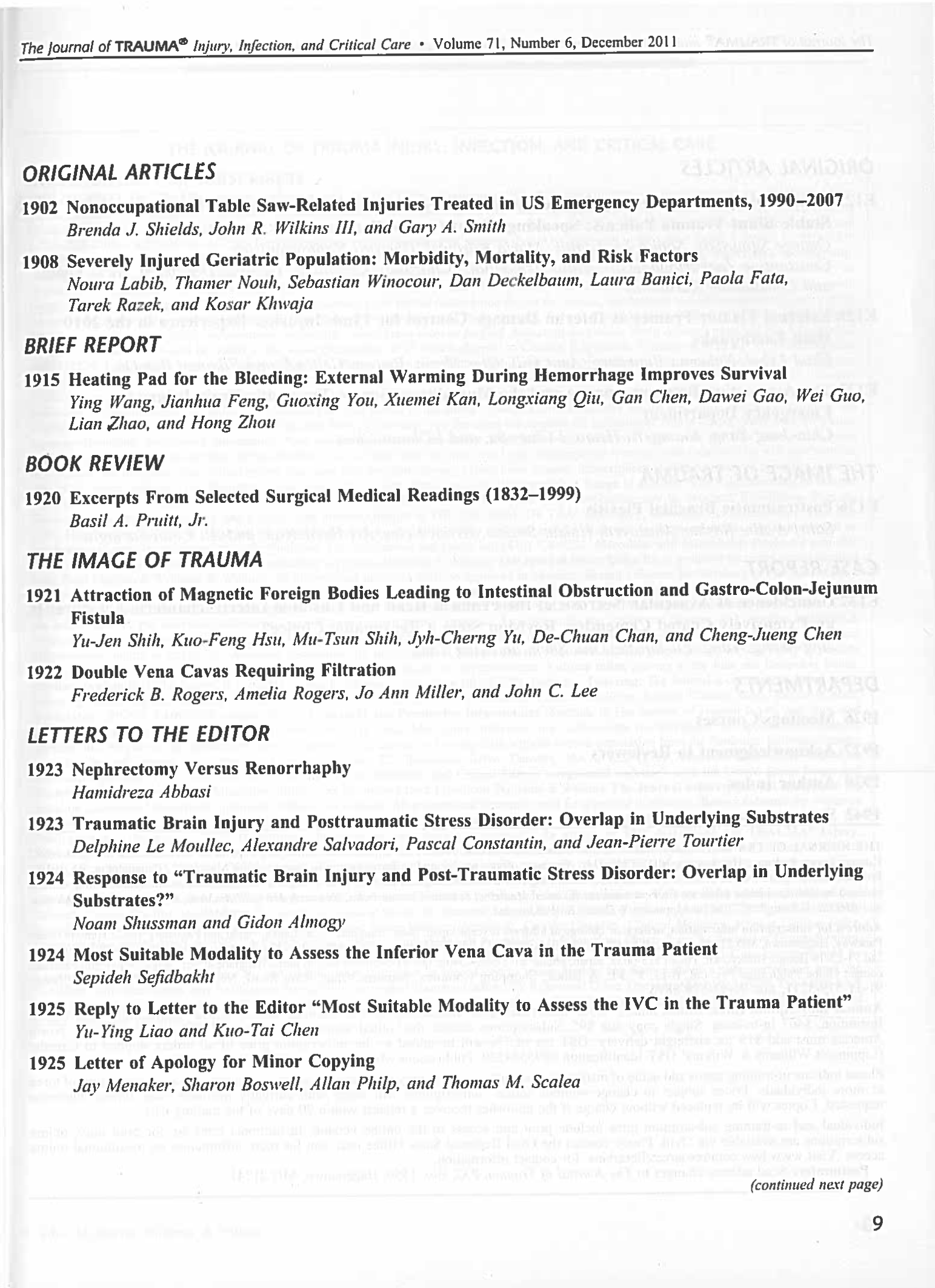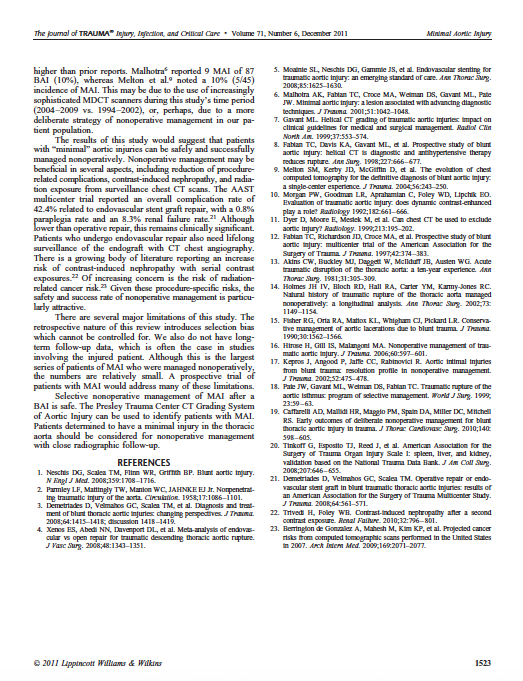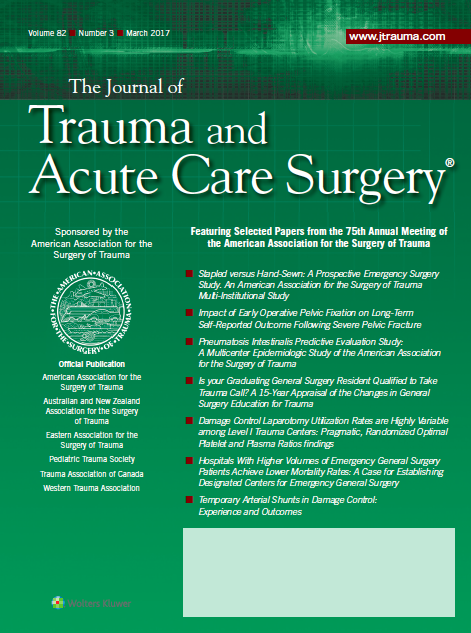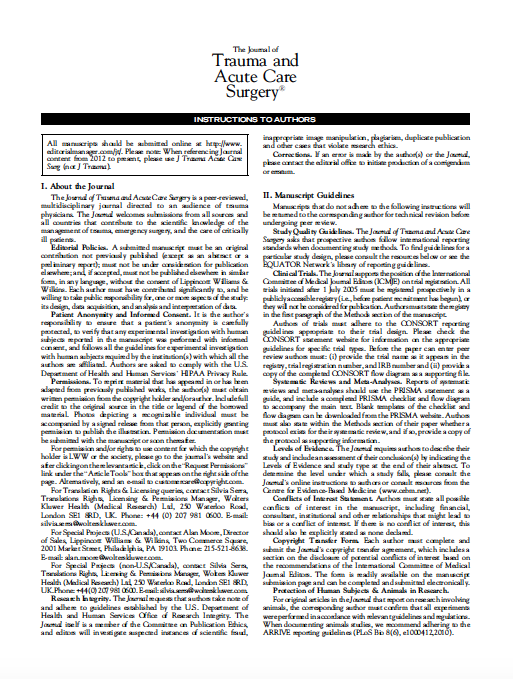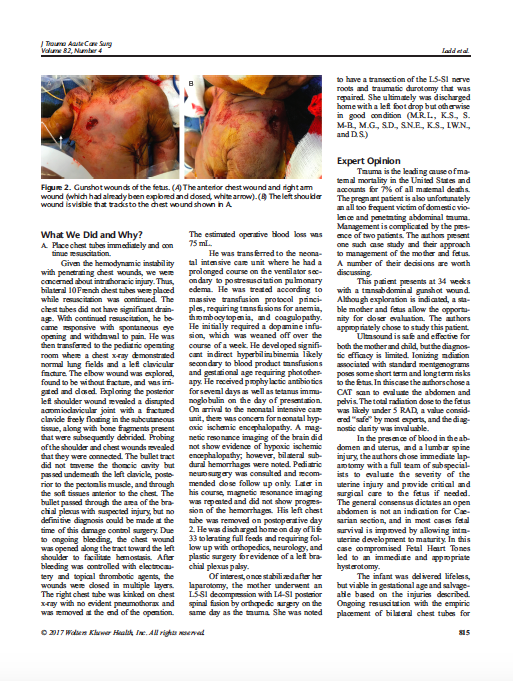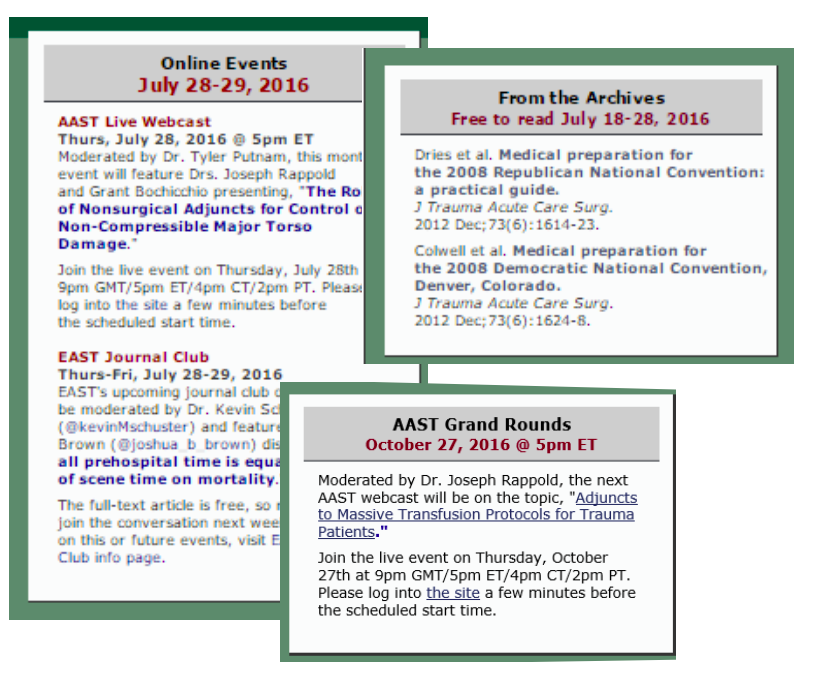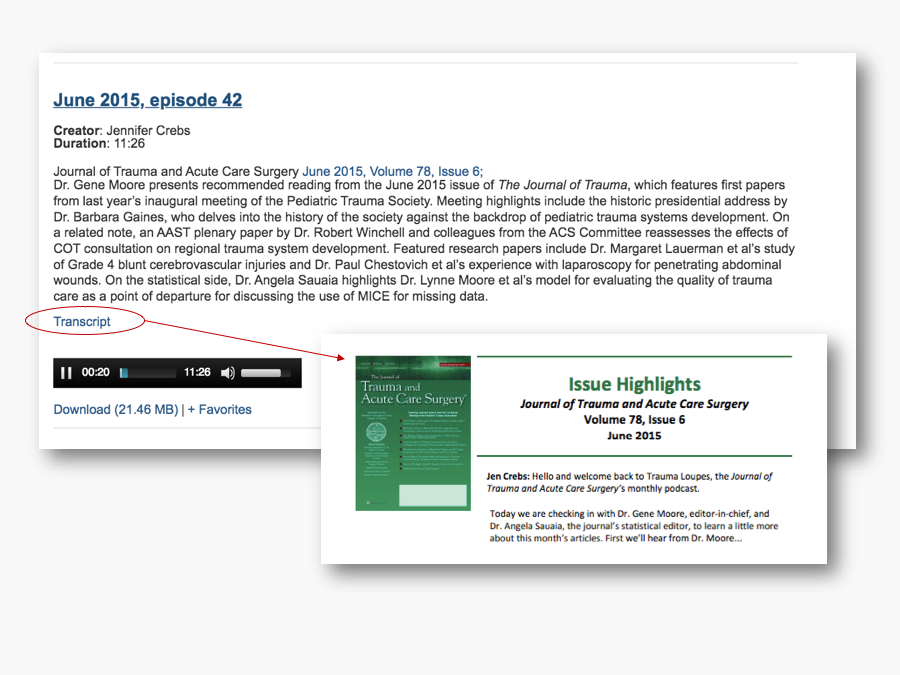EDITORIAL DIRECTION
Content integration, policies, workflows, metrics
Journals are dynamic systems—minor changes can have massive implications. Plans to refresh a publication must rest on a bedrock of sound policy, a deep understanding of content needs, and an awareness of stakeholder priorities.
strategy + reporting
strategy + reporting
CASE STUDY
The Journal of Trauma underwent a transition of editorial operations in 2011, which heralded a complete makeover in scope, content priorities, peer review structure, and print/online products. The challenge was in maintaining the editorial legacy of the journal, while modernizing its practices.
Initial strategy was developed by taking inventory of stakeholder wish-lists. The new editor-in-chief wanted to attract more scientifically rigorous papers, while the sponsoring society was interested in increasing impact factor. The publisher wanted better adherence to production timetables and a more engaging digital presence. Affiliate societies needed more reliable peer review workflows.
To address these points, first steps included content mapping, platform audits, and an in-depth citation analysis. Within three months, I had drafted policies, crafted workflows, redesigned print and digital channels, trained staff, configured platforms, and created a content roadmap that outlined the contours of our work over the next five years.
By 2017, the journal had hit every mark on its initial strategic plan—record gains along all citation indicators, faster turnaround times, rigorous peer-review standards, an engaging digital presence, and a more refined user experience for reviewers, readers, and authors.
policies + standards
Instructions for Authors
Built on the scaffold of the original, these IFAs address a host of new topics, including authorship, COI, animal/human use, research integrity, and reporting requirements.
Reviewer Guidelines
Nothing groundbreaking, just a guide for reviewers. Notable for being widely quoted: "Reviewers should strive to be an author’s ally, with the aim of facilitating effective and accurate scientific communication."
Levels of Evidence
Levels of evidence customized for surgical studies came into the world primarily through the efforts of Drs. Angela Sauaia and Gene Moore. In a supporting role here, I provided structural edits and references.
TL;DR table here.
Embargo Policy
I've always wanted to kill Ingelfinger—this journal let me do it. "Publicity resulting from meeting presentations, versions deposited in preprint servers, or publicly available abstracts will not impact the decision to publish..."
Supplement Guidelines
General guidelines for proposing and developing a sponsored supplement issue. By standardizing the process, expectations were set and communicated to interested sponsors.
strong foundations for sound policies
good policies
rest on
solid foundations
workflow + platforms
Good workflows have French seams—when done right, they are invisible and strong.
This was a challenge on a journal with up to six autonomous peer review processes going at any time. Custom submission site configurations, loads of instructional design, onboarding, enterprise reporting, and tools swiped from software development were the order of the day.
The peer review structure for regular content was single-blind and nested. Key actors included the EIC, associate editors, a statistical editor, and editorial staff. Fire swamp terrors included preventing editorial COIs, over-recycling of text (and experimental cohorts), and image manipulation.
The same went for special issues, supplements, and meeting papers. Just add in novice guest editors, more custom configurations for comfy UX, and much tighter deadlines.
The diagram at right illustrates the main currents a paper negotiates on its odyssey to publication. Further right are screenshots of agile tools used to organize and monitor work. Below are a few samples of ancillary materials.
design + style
The print edition received a new cover, masthead, TOC, mini author instructions, and templates for articles that incorporated levels of evidence and authorship statements. The cover background image and typefaces were selected by Wolters Kluwer.
Original
Redesign
Special Issues
Special thematic issues were a first for this journal. Three to six special issues published annually.
These issues were organized around:
affiliate society meetings, topical events (e.g. gun violence, trauma systems), memorials and festschrifts.
Initial design involved development of peer review processes, commissioned content plans, and post-publication promotion.
Supplements
Sponsored supplements were once a citation loss leader for this journal. To reverse this phenomenon, overhaul was necessary.
Supplements were limited to three/year and topics evaluated. Review structures were cloned from the regular issue, and guest editors received onboarding and support.
Efforts resulted in the most highly cited and used supplements in the journal's history.
content integration
Like many journals, this publication's original digital presence was limited to reproduction of print pages. Creating new standalone content that supported and enhanced standard print offerings was a priority.
At the article-level, content integration took the form of planned social media campaigns, press releases, annotated videos, and online journal clubs. Issues were augmented with monthly podcasts, CME activities, and preview TOCs. For affiliate societies, content collections were bundled online and made free to read. After development, monthly page views to jtrauma.com increased 113%.
Cross-publication integration was a longer process, which began with petitioning the parent society to launch a sister open-access publication. After drafting mission statements and scopes for the society, I worked with the new publisher to replicate article types, processes, policies, and a cascading system to route submissions to the new property.
Free Content Collections
The greatest hits collection, with publisher-approved free access. Manually updated collections included the most-cited papers of all time, guidelines, presidential addresses, and more. See more here.
CME Programs
Read an article, then go online to answer questions for continuing medical education credit. Not pictured is a complementary program for reviewers, who earn up to three CME credits for each paper reviewed.
Annotated Videos
The sposoring society hosted a monthly online lecture series, and videos were hosted on the journal's site. To draw eyes back to research content, each video was presented alongside links to referenced papers (plus leads for further reading). Watch a few over here.
Podcasts
Produced entirely in-house (episodes 1–62), issue podcasts were archived on both iTunes and the main website. Highlighted articles were free to read, and transcripts accompanied each recording.
meaningful metrics
Per the editor-in-chief and sponsoring society's request, the content plan was designed to address impact factor and other traditional metrics.
To do so, the first step required looking at 50+ years of citation dynamics to get a lay of the land. Network-based analysis revealed that the journal was not frequently cited by titles the editors considered to be peers. Citations peaked at 3–4 years post-publication.
It was apparent that, to see a rise along traditional bibliometrics, editors would need to:
- increase selectivity for original research and reviews
- reduce the number of sponsored supplements
- retire a couple of article types, replace with non-citable items
- radically decrease time to publication
- increase information density of original research (i.e. cut salami).
Gains were seen within the first year. Immediacy index increased by publishing manuscripts online directly after publication. The self-citation rate decreased in line with editorial practice (i.e. scrapping redundant citations in letters, editorials, etc). Five years after starting, impact factor rose 73%. When released, RCR and CiteScore corroborated overall citation strides across databases.
Mindful that there is a gap between citation and usage, digital metrics were monitored closely. After deploying daily features, monthly page views increased 113%. Engagement on social media channels hit all-time highs. This, in turn, helped raise individual article altmetric scores.
For the editorial board membership, objective criteria were set. These included a minimum h-index for potential members. For early-career researcher candidates,
m-indices were also calculated.
KEEP EXPLORING...

Analyticsbibliometrics, citation analysis, usage

Audiopodcast, post-production, transcripts

Bookstechnical editing, publishing

Brandingdesign, copy writing

Editorialpolicies, workflows, metrics

Journalismscience writing, reporting

Presspress releases, media relations

Proposalsdevelopment, launch strategy

Research Highlightsmarketing, science writing

Social Mediadigital, strategy, content creation

Talkspublic speaking, workshops

Technicalreference, educational
